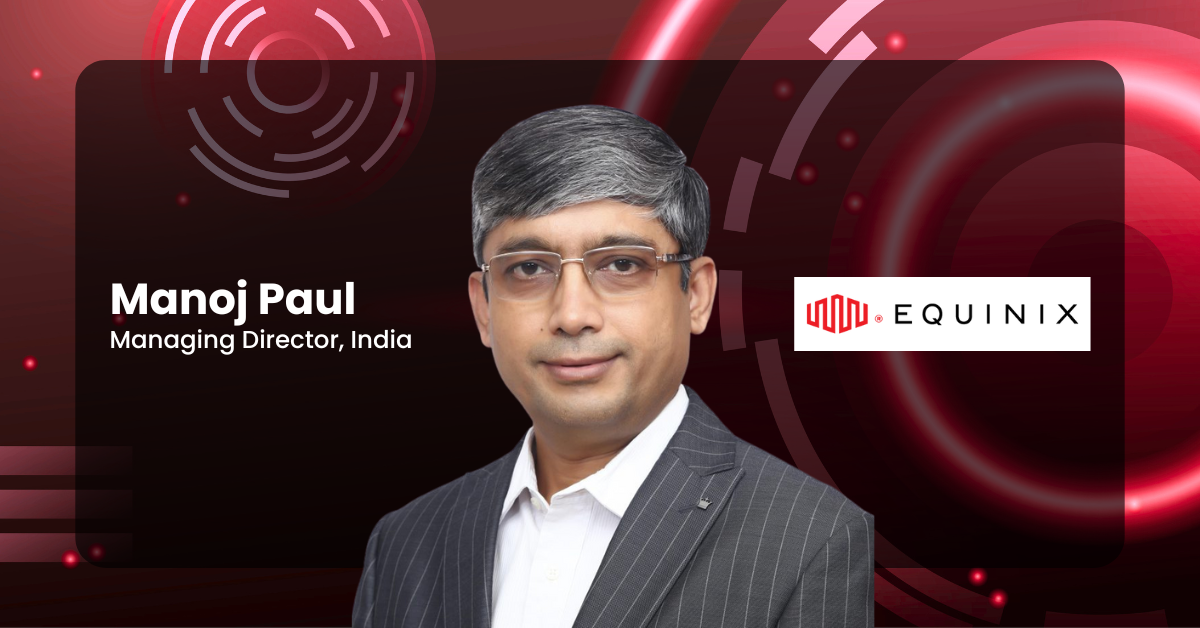India’s digital economy is experiencing exceptional growth, drawing global attention and significant investments from both domestic and international data center companies, as well as cloud service providers and private equity funds. India’s central role as a digital corridor is more crucial than ever, bridging Asia-Pacific, Europe, and the Middle East.
Supporting massive local data production and consumption with a vibrant telco market
India aims to become a US$ 1 trillion digital economy by 2028, supported by the ‘Digital India’ and ‘Startup India’ missions and the world’s third-largest startup ecosystem.
The country’s digital economy is expanding rapidly due to increased smartphone usage, mobile data consumption, and a rising number of internet users. In 2024, monthly mobile data consumption in India reached over 19 petabytes (PB) monthly—the highest globally.
Widespread 4G and 5G networks, along with affordable telecom services, have accelerated this growth, attracting 100 million new 5G users in 2024. Telecom companies are attracting new users with some of the lowest pricing in the world. Affordable mobile internet and high-speed connectivity enable people from even Tier 2/3 cities to consume massive amounts of content, including video, and in many cases, create content themselves, driving further demand for compute and storage resources, and reliable data center capacity.
However, the digital divide remains a top government and industry challenge, requiring innovative digital infrastructure to bridge urban-rural gaps so millions of rural users can benefit equally.
India: Emerging global subsea cable connectivity hub
India stands as a vital digital corridor connecting Asia-Pacific with Europe, the Middle East and Africa through its extensive subsea cable network. These underwater fiber optic pathways boost India’s data transfer capabilities while strengthening global digital connections.
With landing stations for 17 international subsea cables, India holds a key position in global connectivity. New systems like India Europe Express (IEX), India Asia Express (IAX), MIST, 2Africa Pearls, Blue Raman and SEMEWE 6 will cement India’s status as an essential digital hub. These advanced cables are expected to quadruple India’s data transmission capacity, dramatically improving internet connectivity across multiple regions.
This international data traffic surge and the growth in content creation and consumption will require domestic network providers to significantly expand their inter- and intra-city fiber network capacity in general and between data centers and cable landing stations, in particular, to support the increased data flow.
Strengthening India’s digital infrastructure foundation
To ensure the digital economy continues to thrive without barriers, these domestic networks, subsea cables and consumers need to be connected in an efficient way. Data centers and their associated digital infrastructure enable businesses to connect with multiple cloud and network service providers, partners and customers, through physical and virtual interconnection. The growing interconnection capabilities in India enable enterprises to choose the best cloud solutions for their specific needs and adopt hybrid multicloud strategies.
According to ICRA’s March 2025 report, India’s third-party data center capacity stood at about 1,250 MW, and it is projected to double to 2,500 MW by FY 2028, underpinned by ~₹90,000 crore investment. Further, ICRA expects operational capacity to reach 2,000-2,100 MW by March 2027 from 1,150 MW in December 2024, backed by investment of Rs.40,000-45,000 crore in FY2026-27.
While a solid foundation of digital infrastructure is in place in India, much of it was not designed to support the massive amounts of data being generated today. To efficiently manage, transmit, and store ever-escalating data volumes, Indian businesses will need to invest in:
- Greater network density (more PoPs, exchanges, edge nodes)
- High-capacity fiber (100 Gbps, 400 Gbps links)
- Sufficient compute & storage scaling (e.g. modular data halls)
- Cross-connect and peering fabrics to reduce egress and transit costs
According to ICRA’s March 2025 report, India’s third-party data center capacity stood at about 1,250 MW, and it is projected to double to 2,500 MW by FY 2028, underpinned by ~₹90,000 crore investment. Further, ICRA expects operational capacity to reach 2,000-2,100 MW by March 2027 from 1,150 MW in December 2024, backed by investment of Rs.40,000-45,000 crore in FY2026-27.
Government agencies and regulators recognize that tremendous progress has been made, but potential barriers to continuous progress exist. In response, they have launched various initiatives to address the rural and urban digital divide and to make doing business simpler, including:
- BharatNet / National Fiberization Plans, which aim to bring high-speed optical fiber to rural panchayats
- Incentives under PLI (Production Linked Incentive) and Electronics Manufacturing Clusters to promote local manufacturing of data infrastructure
- Support for AI adoption among small & medium businesses through subsidies, grants or tax benefits
- Promotion of green power and renewable energy causation in data infrastructure
Recognizing data centers as critical national infrastructure
While India is already one of the world’s largest multi-tenant data center markets, it is significantly undersized compared to the country’s massive data production and consumption. For every megawatt (MW) of installed colocation capacity, users generate approximately 13.2 PB of data monthly. This ratio indicates India’s tremendous potential for data center expansion compared to more mature markets. In other Asia-Pacific countries, data generated per 1 MW of installed colocation capacity is commonly much lower: 0.3 PB for Australia and just 0.01 PB for Singapore.
The Indian government has designated data centers as critical infrastructure, offering incentives for new development. Growth in the number and capacity of colocation data centers will help support the growing consumption of digital services and data generation, and deployment of available compute and storage capacity.
As you might expect, the expanded use of AI is driving some of this growth, particularly since India is among the leaders in consumer AI adoption. This will increase the demand for high performance data centers and digital infrastructure. Further, as data sovereignty regulations evolve and cloud adoption accelerates, the need for state-of-the-art data center infrastructure will become even more essential for India to fulfill its potential as a digital corridor.
Enhancing India’s digital infrastructure through investment
India’s consistent economic growth provides the financial foundation for sustained digital infrastructure investment, in lockstep with the buildout of data centers across India. We are actively exploring other metros in India for future investments as part of our pan-India digital infrastructure platform. By making these investments and bringing our global platform to India, we aim to be a leading catalyst of development of the overall digital economy.


